The French government had run a series of semiautomatic rifle trials in 1913 and had several designs with a lot of potential, like the A6 Meunier. In fact, most of the designs had dropped the 8mm Lebel cartridge, understanding that its rimmed design was obsolete. However, as war began to look more and more likely, the trials program was abandoned. The rationale was that the eve of war was not a wise time to be rearming troops with new weapons. Once trench warfare took hold and raiding parties emerged as one of the few effective combat techniques, the need for a selfloading infantry rifle came back into focus.
Three French engineers named Ribeyrolles, Sutter, and Chauchat (yes, the same team that developed the CSRG 1915 Chauchat light machine gun) quickly devised a design that was initially presented to the government as a conversion kit to make the 1886-93 Lebel rifle into a self-loader. In reality, little more than the wooden furniture was actually used from the Lebel, but it got the design in the door.
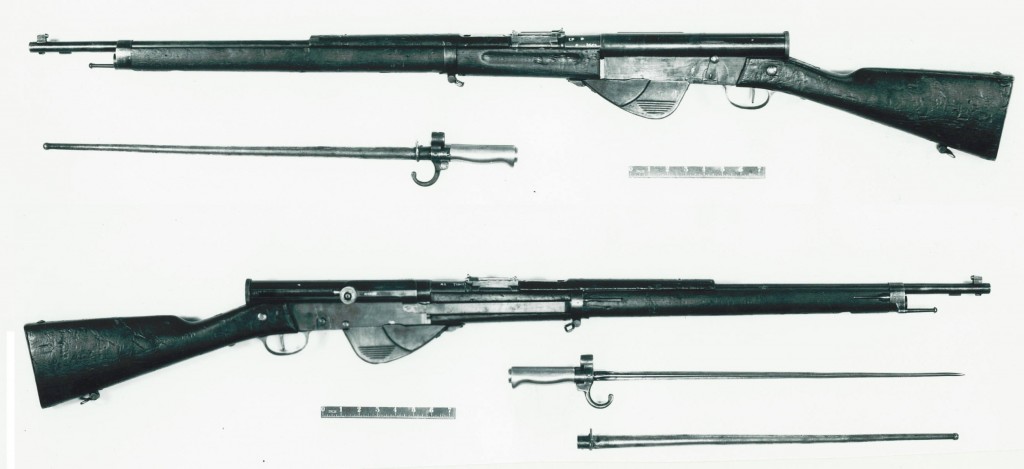
The design was a gas piston operated, rotating bolt rifle. The under-barrel tube magazine from the Lebel was replaced with a gas piston and return spring, and a completely new magazine and receiver were fabricated. As the gas piston moved backwards it pushed a 2-part operating rod connected to a bolt carrier and bolt. The bolt carrier had a camming groove that forced the bolt to rotate 90 degrees and unlock when it was pushed rearwards.
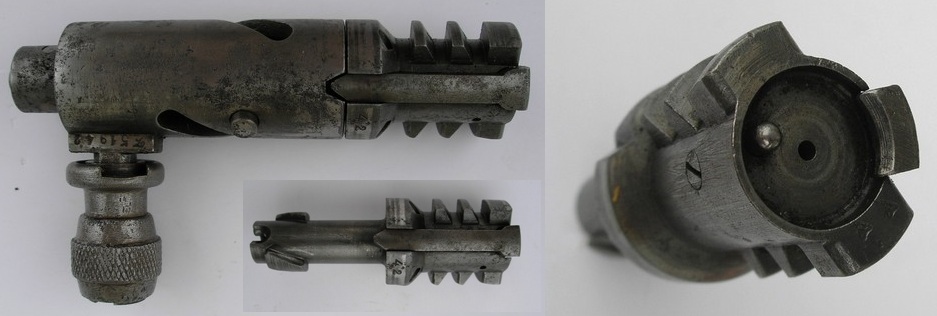
The rifle was chambered for the standard 8mm Lebel cartridge, as this would simplify ammunition supply. However, it did not use the standard 5-round Berthier clip (probably because it was developed before the 5-round M1916 Berthier was adopted), and this was a distinct disadvantage in the field. The RSC 1917 clips was fairly flimsy, and not overly reliable.
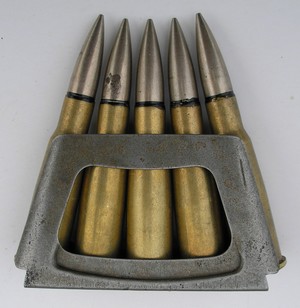
Instead of the now-conventional top loading, the RSC 1917 was reloaded from the bottom. The magazine was hinged open, and a new clip loaded up into the receiver before closing the magazine again.
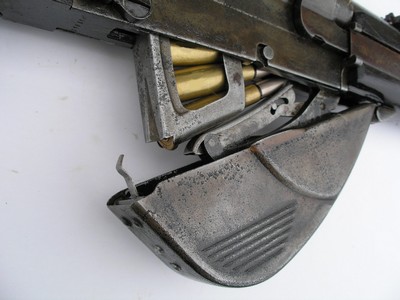
The RSC was formally adopted in May 1916 as the Modele 1917, but problems finalizing the design delayed the start of mass production until April of 1917. Manufacture continued until September 1918, with a total of 85,333 rifles made. Ultimately the Mle 1917 was a bit of a disappointment, as it suffered from many problems in field use. The large open slot that the charging handle ran in was prone to letting dirt into the action, parts breakage was fairly common, and the rimmed cartridge case and poor clip design combined to cause unreliable feeding.
These faults were all recognized, and simply due to the very hasty conditions under which the rifle was designed and tested. A revised and much improved Mle 1918 was put into production at the very end of the war (4,000 made in November 1918) which solved many of the early rifle’s problems. The Mle 1918 had a rotating dust cover to protect the action, it used standard Berthier 5-round clips, it added a last-round bolt hold-open, a shorter barrel, and an improved gas system. The 1918 was also lighter, weighing 10.5 pounds compared to the 1917’s 11.5 pounds. A shorter carbine version of the Mle 1918 was also made in small numbers.
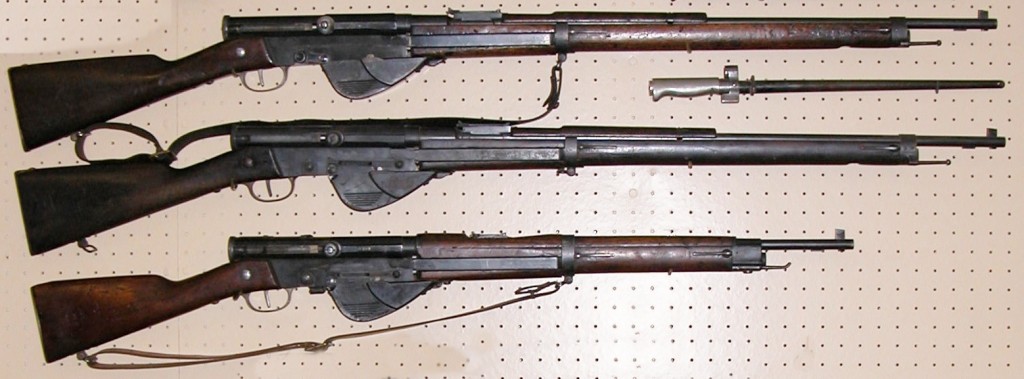
The 1918 rifles saw very little if any use in WWI, but they were used in the 1920s Rif War in Morocco, and reportedly functioned quite well there. In 1935, the majority of the RSC self-loaders or both models were converted into manually-operated rifles by plugging the gas ports, and they were issued to reserve troops.
Manuals
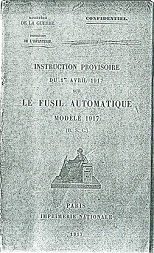

I have three examples of the 1917 rifle. All are different. It seems that they were made on a case by case example. One of mine has been converted to accept the M1916 charging clip. I have fired all three and found all of them jammed. They were also very inaccurate. But remember they were the first weapons of their type issued en masse in a time when the outcome of the war was still in question. None of mine have been converted to straight pull. All three were Veteran bring backs 2 from WW1 and one really nice one from a WW2 occupation officer who foun it in Germany!(Import paperwork proves it). Some of these were used in 1918 and at close range were effective. They are a bear to strip.
i wonder if you can post a clear pictures of gas port and parts? i have something missing from it. looks like part 45 from the drawing is missing but i have part 44. also would be nice to see the hand guard, mine is gone as well
I don’t have access to one of these at the moment, unfortunately.
How can I tell if my rifle is converted to accept the M1916 charging clip? Thank you.
Would it be possible for someone to measure the receiver width both on the bottom/flat are and the top/round area the bolt rides inside?
Thanks!
Does anyone know where I can get dimensions or cad files of a 1917 clip? I’m exploring the idea of doing a reproduction.